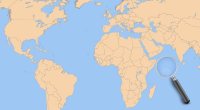Salona
in Solin, CroatiaCategory: Attraction
 8 views
8 views  0 shares
0 shares  0 comments
0 comments
 set bookmark!
set bookmark!
Created/changed by:
System
Address details
Paraći ulica 10, 21210, Solin, Croatia Print route »Phone & WWW


Business hours
Info
Salona (Ancient Greek: Σάλωνα) was an ancient city and capital of Roman province on the Dalmatian coast located in modern-day Croatia. The name Salona preserves the language of the early inhabitants of this area whom the Romans called Dalmatae, and considered to be part of a larger group called Illyrians. Salona (or Salon) is situated near today's town of Solin, about 5 km from Split.In the first millennium BCE, the Greeks had set up an emporion (marketplace) there. After the conquest by the Romans, Salona became the capital of the Roman province of Dalmatia. Colonia Martia Iulia Salona (the full name of the ancient city) was founded probably after the roman civil wars by Caesar's deduction. Early roman city encompassed what Enjar Dyggve called Urbs vetus, namely the area around Forum and Theater. The entrance to Urbs vetus (Porta Caesarea) was placed on the north-east side of the walls which was fortified with towers during the reign of Augustus. The early trapezoid shape of the city was transformed by eastern and western expansion of the city, which Dyggve called Urbs orientalis and Urbs occidentalis. The city quickly acquired Roman characteristics: walls; a forum; a theater; an amphitheater — the most conspicuous above-ground remains today; public baths; and an aqueduct. Many inscriptions in both Latin and Greek have been found both inside the walls and in the cemeteries outside, since Romans forbade burials inside the city boundaries. A number of fine marble sarcophagi from those cemeteries are now in the Archaeological Museum of Split. All this archaeological evidence attests to the city's prosperity and integration into the Roman Empire.
Salona had a mint that was connected with the mint in Sirmium and silver mines in the Dinaric Alps through Via Argentaria. When the Roman Emperor Diocletian retired, he erected a monumental palace nearby. This massive structure, known as Diocletian's Palace, became the core of the modern city of Split.
Salona's continuing prosperity resulted in extensive church building in the fourth and fifth centuries, including an episcopal basilica and a neighboring church and baptistery inside the walls, and several shrines honoring martyrs outside. These have made it a major site for studying the development of Christian sacred architecture.
Salona was largely destroyed in the invasions of the Avars and Slavs in the sixth and seventh centuries CE. Refugees from Salona settled inside the remains of Diocletian's Palace.





